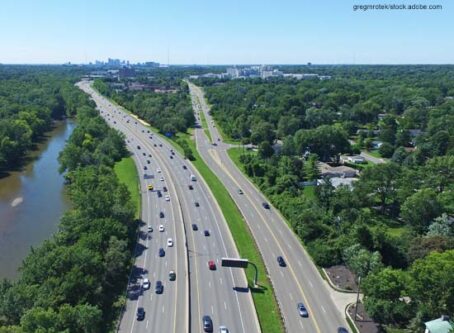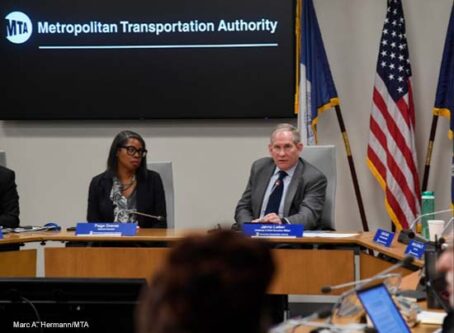Capital Beltway project eliminates 30 miles of proposed toll roads
The Maryland Department of Transportation has modified its Capital Beltway toll project that now includes fewer toll roads.
On May 12, MDOT the Federal Highway Administration and MDOT State Highway Administration announced that Alternative 9: Phase 1 South is the new recommended preferred alternative for the managed lanes study on the Capital Beltway. The switch comes after the state identified a different plan in January, which has drawn criticism from public officials and stakeholders.
According to the new alternative, plans to build a new American Legion Bridge and widen the west side of the Capital Beltway (Interstate 495) and south side of Interstate 270 remain in place. The widening includes two high-occupancy toll (HOT) managed lanes in each direction from the George Washington Memorial Parkway in Virginia to east of MD 187 on the Capital Beltway.
On I-270 from I-495 to north of I-370 and on the I-270 eastern spur from east of MD 187 to I-270, the new alternative proposes adding one HOT managed lane and converting the existing high-occupancy vehicle (HOV) lane into a HOT managed lane, resulting in a network of two HOT-managed lanes in each direction.
Perhaps the biggest change is the elimination of HOT lanes on the Capital Beltway from Bethesda, Md., to state Route 5 in Prince George’s County.
That gets rid of 30 miles of toll lanes, a large portion of the original plan. Late this summer, MDOT plans to issue a supplemental draft environmental impact statement for the new alternative.

New toll lanes are part of Gov. Larry Hogan’s Traffic Relief Plan. The project was initially estimated to cost about $9 billion, with some projections as high as $11 billion.
Hogan’s plan addresses congestion issues near the nation’s capital. At the time, it was the largest proposed public-private partnership highway project in North America. According to a news release, the statewide cost of congestion based on auto delay, truck delay and wasted fuel and emissions was estimated at $2 billion in 2015.
Although MDOT’s Capital Beltway plan does not toll all lanes, some have criticized HOT lanes by calling them “Lexus Lanes” – i.e., the idea that only higher-income earners can afford to access the quicker route. However, MDOT refutes those claims.
“The ‘Lexus-Lane’ claim has been dismissed by studies based on actual user data that shows users of all income levels benefit from reduced travel times, including managed lane users and those who continue to use the general purpose or toll-free lanes,” MDOT states. “Managed lane usage is not closely correlated to income. The managed lanes that we are studying would provide more options for people needing a reliable trip time. Nationwide research shows a majority of travelers choose to use price managed lanes occasionally for critical or important trips, such as reaching an appointment or a school event.”
In addition to HOT lanes on the Capital Beltway, the alternative also includes a bicycle and pedestrian connection across the new American Legion Bridge. An expansion to bus capacity at Shady Grave Metro, park-and-ride facility expansions and environmental enhancements are also part of the alternative.
For more information about the Capital Beltway P3 program, go to 495-270-P3.com. LL









